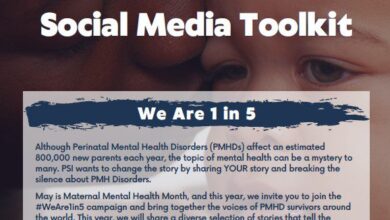Trauma-informed Approach | CAPPA

What is trauma-informed?
Being trauma-informed is recognizing that trauma is common in people’s lives. In other words,
“There is a story behind every person. There is a reason why they are like that. They’re not just like that because they want to be. Something in the past created them, and sometimes it’s impossible to fix…”
― Hanny Quinn
The Center for Disease Control and Prevention states that one in four women have experienced domestic violence in the US, and one in five women under the age of 10 have been raped (Tober, 2018). In addition, discrimination, neglect, and abuse cause further trauma. About 70% of people have been exposed to at least one traumatic event during their lifetime, and of those, 8% have developed Post-traumatic Stress Disorder (Bellenbaum et al., 2018). In other words, many people have experienced severe trauma at some point in their lives. There is a story behind every person.
Childbirth is one of the most stressful life events for most women who give birth; however, one group of individuals who are more prone to experience anxiety are those who have been victims of sexual abuse.
Can we tell a traumatized person?
Trauma comes in many forms and forms. There is no unified way to define what trauma looks like. People who have experienced physical, sexual, or emotional abuse can manifest differently in different ways. Some may look “fully recovered” on the outside, or maybe they are better at hiding their scars on the inside. These negative thoughts may resurface depending on their life circumstances, for example, pregnancy, childbirth, breastfeeding, or the transition to parenthood.
About one-third of women experience trauma during childbirth, and it is often associated with Perinatal Mood Disorder, postpartum depression, generalized anxiety, substance abuse, or post-traumatic stress disorder (Reed, 2017). These individuals are four times more likely to be depressed during pregnancy and have multiple complications, including preterm labor (Kendall-Tackett, 2017). These negative experiences can alter birth people’s sense of self, disrupt their family relationships, mother-infant bonding, and subsequently the child’s social, emotional, and mental development.
What are the effects of trauma?
This video by Dr. Cruz summarizes the effects of trauma and its consequences.
Thus, trauma not only affects the individual of birth but also the growth and development of the next generation.
The World Health Organization in 2014 issued a statement calling for “respectful care for women giving birth.” The way women are treated prenatally will affect whether or not they will be successful at breastfeeding. The WHO goes on to say that “if we want to increase breastfeeding rates, gentle care can make all the difference.” (Kendall-Tackett et al., 2017).
Childbirth can be another trauma for individuals who have been sexually abused (Harris, 2018). Throughout the process of pregnancy and childbirth often associated with unwanted touching and internal examination, which can trigger anxiety and flashbacks from past sexual trauma (Reed et al., 2017). These negative intrusive memories increase their emotional and physical distress. They are on high alert, they have trouble sleeping or concentrating, and they try to avoid remembering traumatic events. 3% of prenatal and 4% of postpartum individuals are diagnosed with PTSD during this transition to parenthood (Bellenbaum et al., 2018).
What are we going to do with that?
The Trauma-Informed Approach (TIA) is designed to address the impact of trauma so that care providers can work together to help individuals heal. This approach teaches us to shift the question from “What’s wrong with you?” in “What happened to you?” to try and understand people’s back stories, and remove stigma or blame from trauma survivors. The goal here is to prevent retraumatization.
The 4 Rs
The Substance Abuse and Mental Health Services Administration (SAMHSA) suggests the 4Rs:
- Realize that trauma is a widespread issue that affects many people. We must recognize that every person can have some kind of trauma in the past. The better approach is the “universal approach”. We assume that everyone has trauma, and we have to handle every single person with care. We don’t need to question their past experience. We simply assume that they have some kind of untold history, and we must respond cautiously.
- Recognize trauma and its effects. Pregnancy is a window of opportunity for change; Pregnant individuals are more open to new beginnings, new chapters. As birth workers, we embrace this golden opportunity to help them take the first step toward healing.
- Respond by integrating different policies and staff training to complement the principles of a trauma-informed approach. Organizations need to adopt a trauma-informed approach as their standard of practice.
- Fight retraumatization. We will do everything to avoid retraumatization.
The 5 Guiding Principles
The 5 Guiding Principles of trauma-informed care are Safety, Choices, Collaboration, Trust, and Empowerment.
- Ensure Safety. Make pregnant women safe, both physically and emotionally.
- Offer Options. Educate individuals about their choices during pregnancy and childbirth.
- Work with health care providers. Build bridges and work collaboratively toward common goals.
- Show trustworthiness. Build a trusting relationship – what we say is what we do, and be trustworthy!
- Empowerment. Focus on building their strengths. Empowering them to establish stronger coping skills to move beyond their past experience and avoid retraumatization.
We need to understand and try to change the way we think. Remember, sometimes we only know their names, not their stories.”
― Hanny Quinn
Childbirth educators, labor doulas, postpartum doulas, lactation educators, and new parent educators, let the Trauma-informed Approach be our Standard of Care!
Let TIA be the engine of our train!
Quote
Bellenbaum, P., & Bellenbaum, P. (2018). Trauma Informed Care (TIC) in the Perinatal Period — The Motherhood Center of New York. Retrieved February 28, 2021, from https://www.themotherhoodcenter.com/blogindex/2018/8/9/trauma-informed-care-in-the-perinatal-period
Harris, A. (2020, Feb 7). Childbirth can be another source of trauma for abused women. Retrieved February 28, 2021, from https://www.irishtimes.com/life-and-style/health-family/childbirth-can-be-another-source-of-trauma-for-women-who-were-abused-1.4141804
Menschner, D., and Maul, A(2021). Key ingredients for successful implementation of trauma-informed care – Center for Health Care Strategies. Retrieved February 28, 2021, from https://www.samhsa.gov/sites/default/files/programs_campaigns/childrens_mental_health/atc-whitepaper-040616.pdf
Mosley, E., & Lanning, R. (2020). Evidence and guidelines for trauma-informed doula care. Midwifery, 83, 102643. doi: 10.1016/j.midw.2020.102643
Reed, R., Sharman, R., & Inglis, C. (2017). Women’s descriptions of childbirth trauma in relation to caregiver actions and interactions. BMC Pregnancy And Childbirth, 17(1). doi: 10.1186/s12884-016-1197-0
Tello, M. (2018). Trauma-informed care: What it is, and why it matters – Harvard Health Blog. Retrieved February 28, 2021, from https://www.health.harvard.edu/blog/trauma-informed-care-what-it-is-and-why-its-important-2018101613562
What is Trauma-Informed Care? – Trauma-Informed Care Implementation Resource Center. (2018). Retrieved February 28, 2021, from https://www.traumainformedcare.chcs.org/what-is-trauma-informed-care/
Why Trauma Care Must Be Our Standard. (2017). Retrieved February 28, 2021, from https://womenshealthtoday.blog/2017/08/24/why-trauma-informed-care-needs-to-be-our-standard/
About the Author

Amy Li is a CAPPA Certified Childbirth Educator, New Parent Educator, Postpartum Doula, HUG Your Baby teacher, and a Registered Nurse. She completed her RN training in London, England, and received her nursing degree and Cognitive Behavior Therapy Advanced Certificate in Toronto. For the past 18 years, Amy has dedicated her career to supporting high-risk families through their prenatal, postpartum, and parenting journeys, and counseling women with postpartum depression. As a lifelong learner, Amy has explored various modalities for teaching childbirth classes appropriate to diverse communities, including the Lamaze method and as a prenatal educator at a teaching hospital, and is excited he shares his experience with others.





